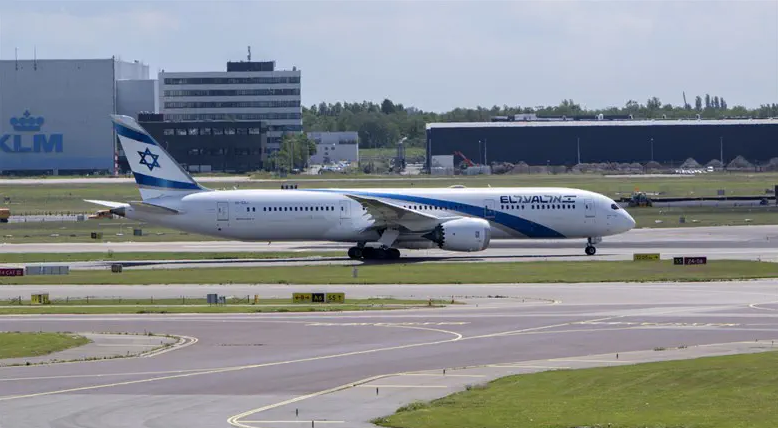Introduction to the incident
Israel’s recent emergency landing has stirred a whirlwind of emotions and concerns among travelers and aviation enthusiasts alike. Picture this: passengers aboard a flight, blissfully unaware of the impending chaos, suddenly find themselves in an unexpected situation that could change everything. The tension climbs as they brace for an experience no one ever wants to encounter while flying high above the clouds. This incident serves as a stark reminder of the fragility of air travel and prompts us to explore what unfolded during those harrowing moments. What really happened? How did it affect everyone on board? Let’s dive into this unfortunate reality surrounding Israel’s emergency landing and uncover its implications for passengers, crew members, and the industry at large.
What happened during the emergency landing
The emergency landing unfolded rapidly. Passengers were initially unaware, engrossed in their travels. Suddenly, an announcement crackled over the intercom, interrupting the usual hum of flight chatter.
Crew members quickly sprang into action, demonstrating professionalism amidst rising tension. The aircraft descended sharply as pilots followed protocol to ensure everyone’s safety.
Outside views changed dramatically; a sea of green fields soon replaced the clouds. Passengers exchanged worried glances and whispered concerns about what was happening.
As the wheels touched down on unfamiliar ground, relief washed over many faces. However, uncertainty lingered in the air as they awaited instructions from crew members who remained calm and collected throughout.
Emergency services greeted them upon arrival on the runway. Their presence signaled that help was readily available should it be needed. Despite discomfort and anxiety during those moments, survival instincts took precedence for everyone onboard.
Impact on passengers and crew members
The impact of Israel’s emergency landing on passengers and crew members was profound. The unexpected nature of the incident left many feeling shaken. Panic and anxiety surged as they braced for an uncertain outcome.
For passengers, the experience was terrifying. Many grappled with fear for their safety and that of fellow travelers. Some reported physical symptoms like increased heart rates or shaking hands, a visceral response to the crisis.
Crew members faced immense pressure during this time. They worked tirelessly to maintain order and reassure frightened passengers. Their training kicked in as they managed communications and provided guidance amid chaos.
Afterward, both groups carried emotional scars from the event. Conversations shifted from excitement about travel to discussions about survival instincts—a stark reminder of vulnerability in air travel.
Response from Israeli authorities and airlines
In the wake of the emergency landing, Israeli authorities acted swiftly to address public concerns. They launched an immediate investigation into the incident, prioritizing transparency and communication with affected passengers.
Airlines operating in Israel also stepped up their responses. They provided support services for those involved, including counseling and assistance with travel arrangements. Communication lines were open, ensuring that families received timely updates about loved ones.
Regulatory bodies reassured travelers by emphasizing their commitment to safety standards. They pledged thorough reviews of protocols related to emergencies in aviation.
Moreover, airlines started holding briefings aimed at educating staff on managing emergency situations more effectively. This proactive approach is meant not just to handle incidents but also to instill greater confidence among passengers during flights across Israel’s airspace.
Analysis of the safety measures in place for emergency landings
Air travel is inherently safe, but the unpredictable nature of emergencies necessitates robust safety measures. Various protocols exist to prepare pilots and crew for unplanned landings.
Flight crews undergo extensive training in emergency procedures. They simulate various scenarios, including engine failures and medical crises. This immersive preparation equips them with critical skills needed during real-life situations.
Aircraft design also plays a crucial role in enhancing safety. Modern planes feature advanced technology that aids pilots during emergencies, such as automated landing systems. These innovations can significantly reduce risks when an unexpected situation arises.
Furthermore, strict regulations govern air traffic control communications during emergencies. Effective coordination ensures timely assistance from ground services and rescue teams if needed.
Regular drills are essential for maintaining readiness among airline staff, fostering a culture of vigilance that prioritizes passenger welfare at all times. This layered approach reinforces the commitment to ensuring safer skies for everyone involved in air travel.
The psychological effects on passengers after experiencing an emergency landing
Experiencing an emergency landing can leave lasting psychological scars on passengers. The shock of sudden turbulence or alarms blaring can trigger intense anxiety. Many report feeling a rush of fear, questioning their safety and the reliability of air travel.
Post-incident, survivors often grapple with unsettling memories. Flashbacks may occur at unexpected times, reigniting feelings of panic. It’s not uncommon for individuals to avoid flying altogether after such a traumatic event.
Support systems play a vital role in recovery. Accessing counseling services can help passengers process their emotions and regain confidence in air travel.
Understanding that these reactions are normal is crucial for healing. Each passenger’s experience is unique, shaped by personal resilience and coping mechanisms. This journey toward emotional recovery highlights the need for awareness surrounding mental health following aviation emergencies.
Steps taken to prevent future incidents
Following the recent emergency landing in Israel, significant steps are being taken to enhance aviation safety. Airlines and regulatory bodies are now closely examining existing protocols.
Training for crew members is being revamped. Enhanced simulations that mimic various emergency scenarios will ensure preparedness under pressure.
Airlines are investing in advanced technology for aircraft monitoring systems. Real-time data analysis can detect issues before they escalate into emergencies.
Communication strategies between pilots and air traffic control are also under review. Clearer channels can help resolve potential crises faster.
Moreover, passenger safety briefings have become more comprehensive. Ensuring that travelers understand procedures during emergencies empowers them to respond effectively when situations arise.
Collaboration with international aviation organizations is ongoing, allowing Israel to adopt best practices from around the globe. This proactive approach aims not just at preventing future incidents but also at restoring confidence among passengers and crews alike.
Conclusion: Importance of prioritizing safety in air travel Israel’s Emergency Landing
The recent emergency landing in Israel serves as a stark reminder of the unpredictable nature of air travel. While incidents like these can be alarming, they also highlight the importance of robust safety protocols and preparedness from airlines and authorities. Passengers trust that their journeys are safe, so it’s crucial for all stakeholders to continuously work on improving measures for handling emergencies.
Airlines must invest in rigorous training for crews and ensure aircraft maintenance standards remain high. Furthermore, communication with passengers during such events is essential to alleviate fears and provide clear instructions.
Safety should always take precedence over convenience or cost-cutting measures. As travelers continue to soar through the skies, prioritizing their well-being is not just an obligation—it’s a necessity that fosters confidence in aviation as a whole. Keeping this focus will help prevent future occurrences similar to Israel’s emergency landing while ensuring that those aboard feel secure every time they fly.









